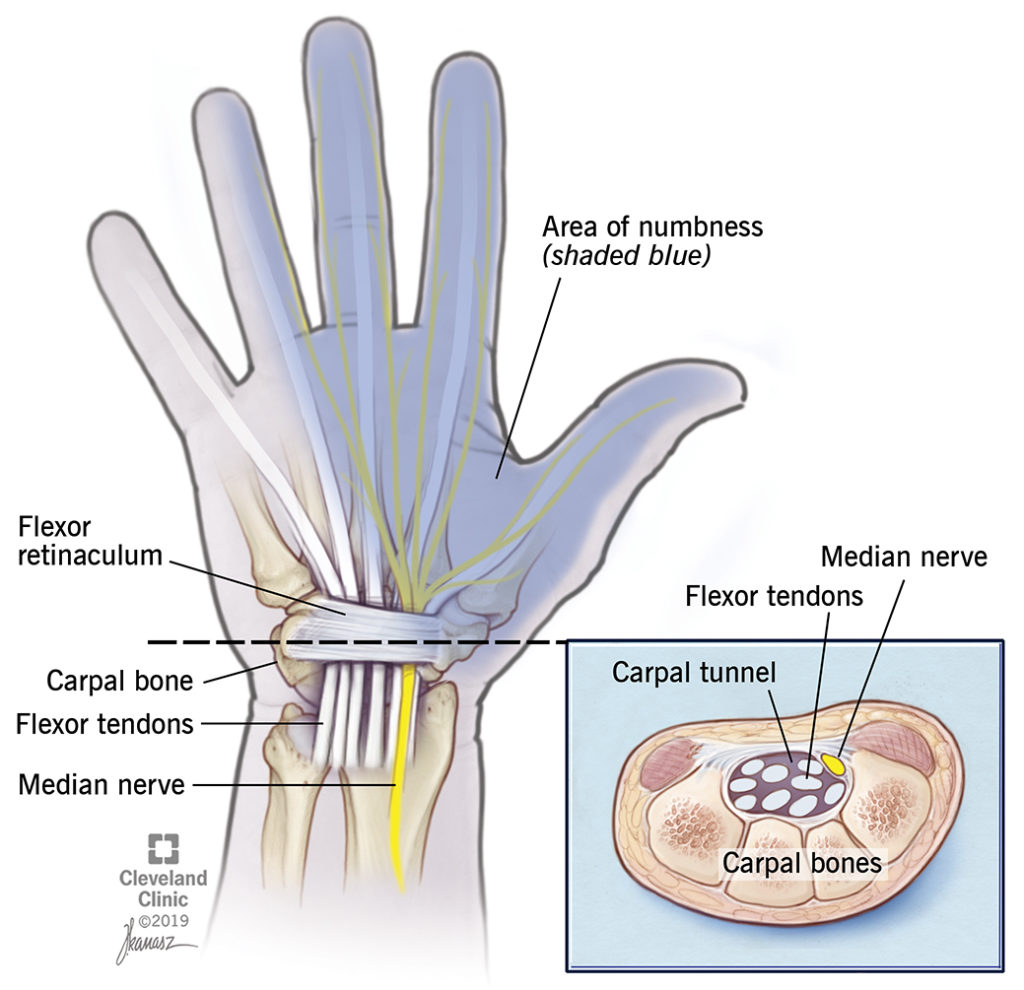Chiropractic and Carpal Tunnel Syndrome


Chiropractic and Carpal Tunnel Syndrome
| Dealing with the new normal- you’re wrists. | |
| With so many people working from home today, and many in less-than-perfect working stations (kitchen counters, dining room tables, etc) We thought it was important to talk about common areas of stress to the body in these make-do conditions. What is Carpal tunnel syndrome? The fingers are packed with nerve endings that help people touch and feel the environment around them. Many of these nerve endings come from the median nerve which begins in the shoulder region and ends just past the wrist into the hand. At the point of the wrist is the carpal tunnel. The median nerve along with tendons pass through the carpal tunnel from the forearm into the hand. In carpal tunnel syndrome, the median nerve can become compacted by the surrounding tendons. This places pressure on the nerve and can cause damage. This leads to a variety of symptoms, ranging from mild to severe. The condition may need to be treated with surgery. What follows are ten symptoms of carpal tunnel syndrome: Advertisement Symptom #1: Numbness and Tingling Numbness and tingling are common symptoms of carpal tunnel syndrome. These sensations are not uncommon. Most people have experienced them after sitting awkwardly for a while, but it usually goes away. Although often harmless, numbness and tingling can be an indicator that something is wrong. For people with carpal tunnel syndrome, numbness and tingling in the hand can range from uncomfortable to painful. It is often a mild symptom at first, but it increases in severity as the condition progresses. One distinguishing characteristic of carpal tunnel syndrome is that the small finger will not be affected since it has a different nerve than the others. The Stats Carpal tunnel syndrome (CTS) affects more than 3 million people annually and occurs when there is compression of the median nerve where the nerve runs through the carpal bones of the wrist. A review of CTS studies that include joint mobilization indicates, according to researchers, “…joint mobilization was associated with positive clinical effects for persons with CTS.” Joint mobilization of the wrist is nothing more than introducing safe, controlled force to the carpal bones of the wrist in order to reduce pressure to the median nerve, break adhesions, and improve blood flow. Doctors of chiropractic are trained and fully skilled in the art of joint mobilization, which is commonly called “adjustments.” Though diagnosing carpal tunnel syndrome can be difficult because it is often impossible to pinpoint its exact cause, Chiropractors can accurately diagnose carpal tunnel syndrome. Dr.s of Chiropractic have special expertise in nerve entrapment syndromes, like carpal tunnel syndrome, and have effective methods for treating the issue. Specific exercises can help reduce pain, numbness, and other symptoms associated with carpal tunnel syndrome by reducing pressure on the median nerve at the wrist. These exercises help the median nerve glide through the carpal tunnel, which helps improve range of motion and hand function. Exercises include: Wrist extension stretch – performed by straightening the arm with the wrist bent backwards as if signaling someone to stop, and then pulling the palm back with the other hand and holding for 15 seconds Wrist flexion stretch – straighten the arm with the palm facing down and wrist bent so that fingers are towards the floor; pull the hand gently towards the body and hold for 15 seconds Medial nerve glides – performed by making a fist with the thumb outside the fingers and facing towards you, extending the fingers and thumb so the hand is straight, bending the wrist so that your palm faces upwards, extending the thumb, and straightening the arm If you are suffering from CTS, or similar soft-tissue ailment, we encourage you to consider chiropractic care today. | |
Uncategorized
COMMENTS: No Comments
